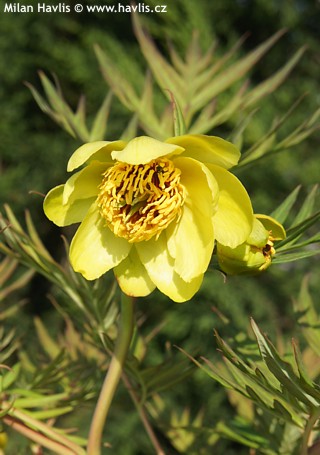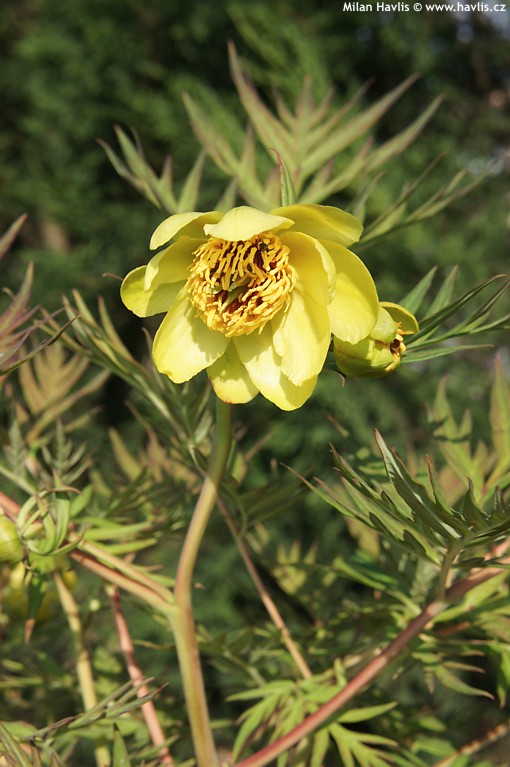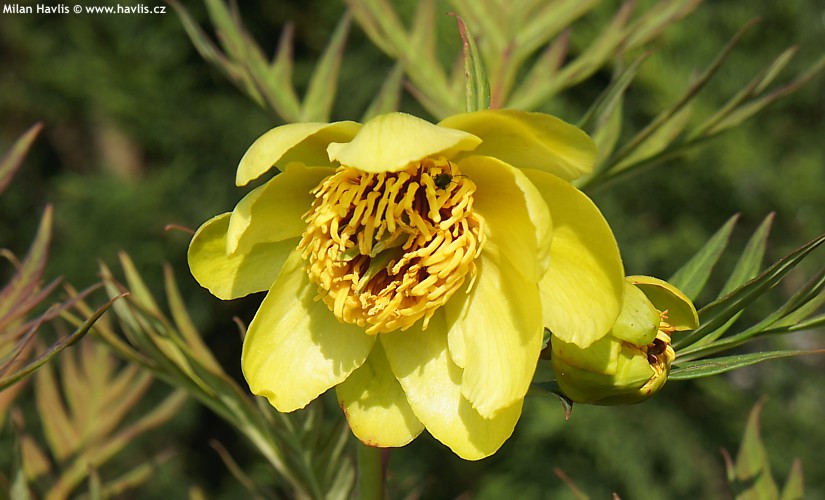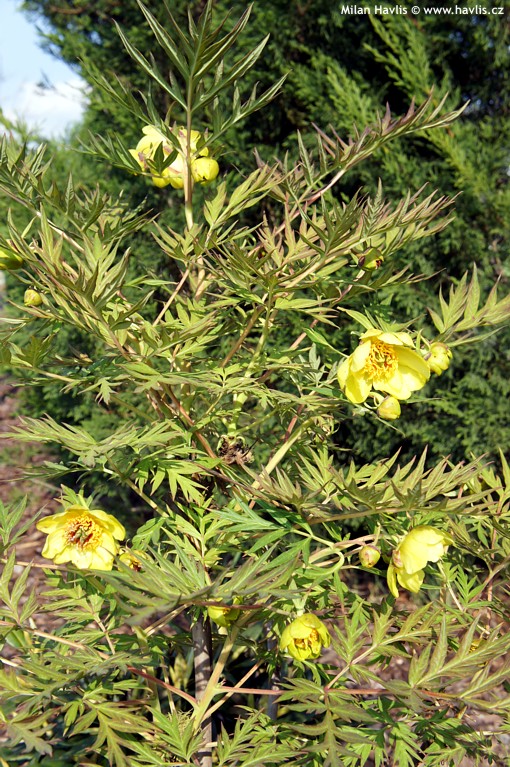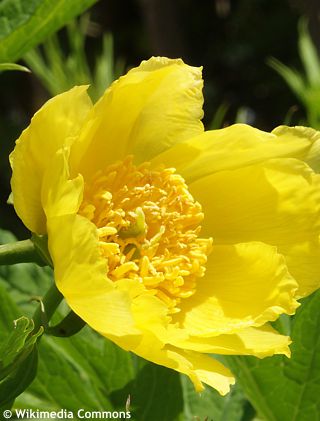Paeonia lutea f.dissecta Tibetan peony
Tibetan peony is a shrubby peony whose name was a subject for discussion especially at the turn of the millennium. Originally called paeonia delavayi after the botanist who found it in late 1880’s the name changed several times. We decided to accept the name which best suits its features as far as Latin translation: Paeonia (peony) lutea (yellow) f.dissecta (cut-leaf form).
Tibetan peony grows in East Asia in altitude of 2000m and higher, on sunny slopes and at margins of pine and oak forests. It is a slow growing shrub, very similar to tree peony, but always upright. In the middle of spring it makes small, about 4-6 cm wide, lemon yellow, single of exceptionally semi-double, fragrant flowers with centres stuffed with red and yellow stamens. It remains beautiful even if the flowers are gone thanks to its highly decorative leaves. They are deciduous, large, deeply lobed (dissected), fresh green with some red hues, and turn orange and scarlet red in autumn.
As a species, this peony is one of the most difficult to find in European nurseries, and this form with dissected foliage is virtually non existent in the list of cultivated plants. Still, if you manage to get yourself one you are definitely not dealing with a demanding prima donna. This plant will grow in almost any well-drained, preferably acid soil in full sun or part shade. Pruning? What do you want to prune if it grows only a couple of inches per year. Hardiness is difficult to estimate – it is used to extremes both ways, and short summers. Though, it is expected to grow in zones 5 and higher (from about -29°C upwards).
Last update 04-05-2014

































